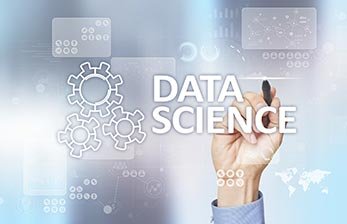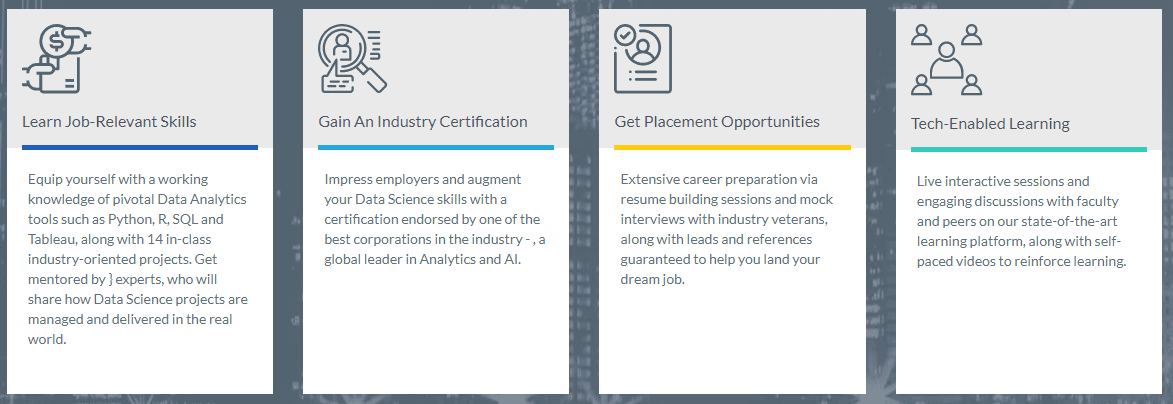According to the recent Glassdoor report on the 50 best jobs in America, data science jobs are still the most opted-for job choice in the IT sector. This report studies factors such as job satisfaction, salary, and the total number of jobs available.
Performing well in all sectors, data science jobs have scored an overall rating of 4.8 out of 5. With a huge gap between demand and supply of qualified individuals, this profession is expected to grow bigger. If you wish to develop a successful data science and analytics career, consider enrolling in the data science course by Imarticus Learning, called the Postgraduate Program in Data Science and Analytics, designed to foster the skills required for the modern data scientist.
In this era of Machine Learning and Big Data, data scientists are the stars. If you are looking to be a part of this, the following are some of the data science interview questions you might face while applying for jobs to display your technical proficiency. Brief answers are also provided to help you recall.
Data Science Interview Questions
What is Data Science ?
Data science is a field that involves collecting, analyzing, and understanding data to find useful information and patterns. It combines skills from math, computer science, and specific areas of knowledge to help make better decisions based on data.
Differentiate between Data Analytics and Data Science
While both the data science and data analytics fields are about working with data to gain insights, data science usually involves using data to build models that can predict future outcomes, whereas data analytics typically focuses on analyzing past data to inform present decisions.
What is root cause analysis?
This is a problem-solving technique used for isolating the root causes of a problem.
What is meant by Logistic Regression?
Also known as the Logit Model, it is a technique to predict the binary outcome from a linear combination of predictor variables.
What are the recommender systems?
They are a subclass of filtering systems that predict customer ratings of a product.
What is Collaborative Filtering?
It is a widely used filtering system to find patterns through collaborating perspectives, several agents, and multiple data sources.
Why do we do A/B Testing?
A/B testing detects any change to a web page and increases or maximises the strategic outcome.
What is the Law of Large Numbers?
It states that sample variance, standard deviation and the sample mean converges to the intended estimate. This theorem provides the basis for frequency style thinking.
What is Star Schema?
It is a database schema where data is organised into dimensions and facts. A sale or login marks a fact. The dimension means reference information about this fact, such as product, date, or customer.
Define Eigenvalue and Eigenvector
Eigenvalue denotes the direction at which a linear transformation acts by compressing, flipping, or stretching. Eigenvectors are used to understand the linear transformation. The correlation or covariance matrix can be found using eigenvectors.
What are the common biases during the sampling?
Under coverage bias
Selection bias
Survivorship bias
What is selective bias?
The problematic situations created by non-random samples are generally called selection bias.
What is Survivorship Biasing?
This is a logical error caused by overlooking some aspects due to their lack of prominence. It leads to wrong conclusions.
Define Confounding Variables
They are variables in a statistical model that correlate with both independent and dependent variables.
What are Feature Vectors?
It is an n-dimensional vector containing numerical features of an object. It makes an object easy to be analysed mathematically.
What is Cross-validation?
It is a popular model validation technique used to evaluate how the output of a statistical analysis will generalise to an independent data set.
Gradient descent methods always converge to a similar point, true or false?
False. In some cases, they approach local optima or local minima point. The data and starting conditions dictate whether you reach the global point.
Preparing for important data science interview questions is essential for landing your dream job. By familiarizing yourself with what is data science all about and common data science topics, you can showcase your technical proficiency. Ultimately, effective interview prep improves your confidence and helps you present yourself as a qualified data science candidate.





